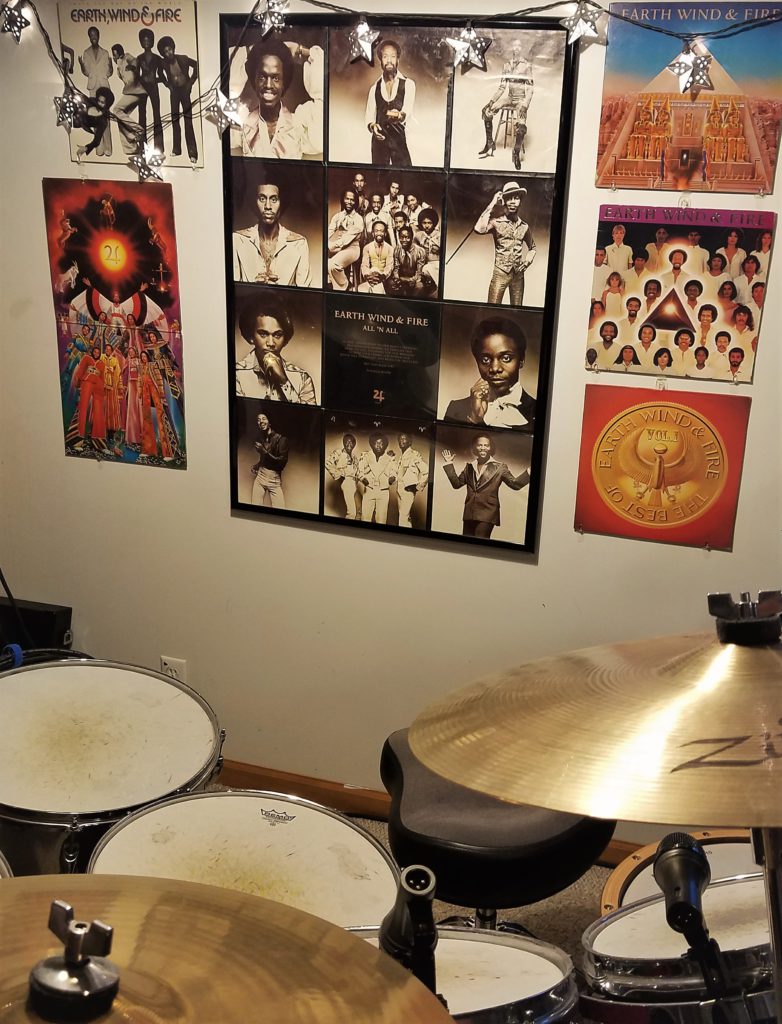
Above my Pearl drum kit in my studio hangs a massive poster of Earth, Wind & Fire.
It came folded up inside the LP record “All ‘N’ All” when you bought it in the 70s.
Around the sides of the poster also hang my favorite EWF records – the ones that I’ve listened to countless times and still inspire me to this day.
And on almost every one of those records… you’ll hear a Kalimba.
“What is a Kalimba?” you ask. GREAT question. In a nutshell, it’s a fantastic and fun percussion musical instrument played with the thumbs.
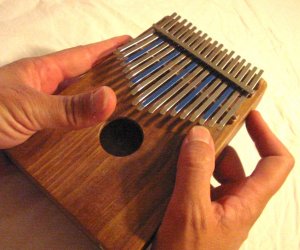
Beyond that, It’s an instrument near and dear to my heart, with many cool attributes.
Let’s talk about what they are!
Vid’! A Vid! What the Kalimba Did!
First things first: talking about an instrument is useless unless we hear
it. That’s how we really know what it’s about.
To facilitate that, I’ve made a short video to introduce you to its unique
voice. Take a listen…
My Cousin, Mbira… !
The Kalimba (just like the Udu drum which I wrote about HERE) is a thoroughly African instrument.
Today it is still ubiquitously used in diverse ceremonies throughout Nigeria, the Congo, Zimbabwe and other African nations.
But, interestingly, if you look for the instrument on that continent, it will be called an “Mbira“, not a Kalimba.
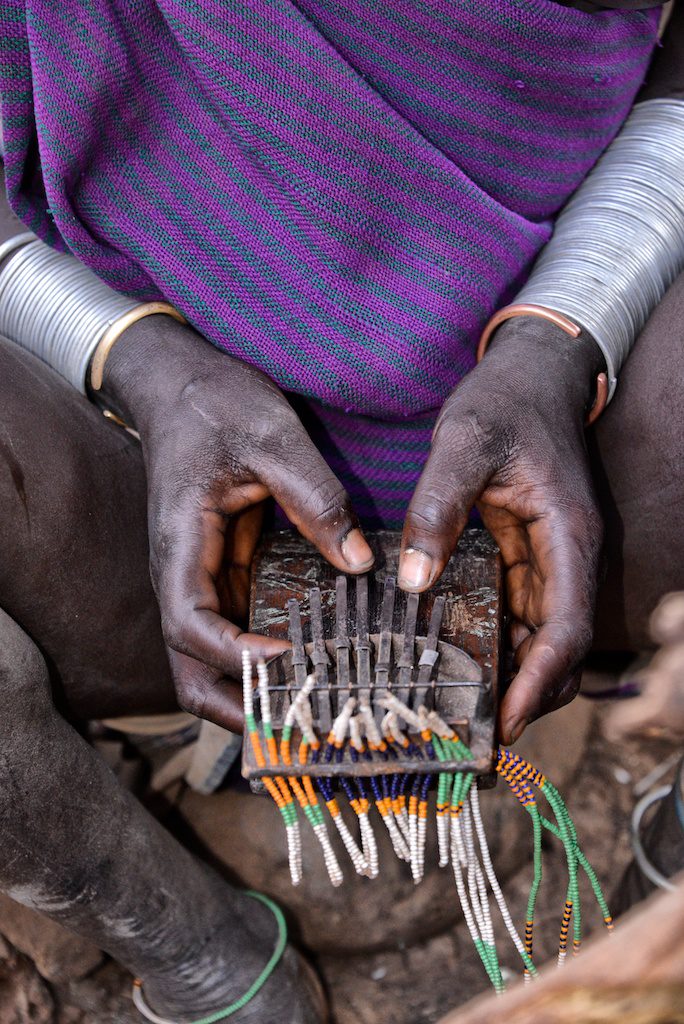
So why don’t we call it an Mbira?? Well, it all has to do with marketing, and particularly the first person to market them to the United States and other Western countries.
His name was Hugh Tracey, and he had been an ethnomusicologist in Africa since the 20s. In the 50s, he finally founded his company called “African Musical Instruments“, or AMI. Through it he introduced the Kalimba to the world.
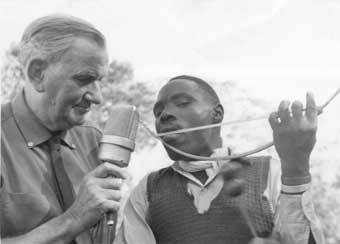
Did Hugh know of the Mbira variation of the instrument called a “Karimba”, and accidentally change a consonant?? Or did he hear members of the Bantu tribe talk about “Kalimba”, which to them means “”little music”, and confuse it with the instrument itself??
Nobody seems to know at this point. What we DO know is that he respected African music highly, and eventually successfully marketed his “Kalimba” to Western countries by tuning the notes diatonically, according to the Western major scale. This was something the African cultures did not do.
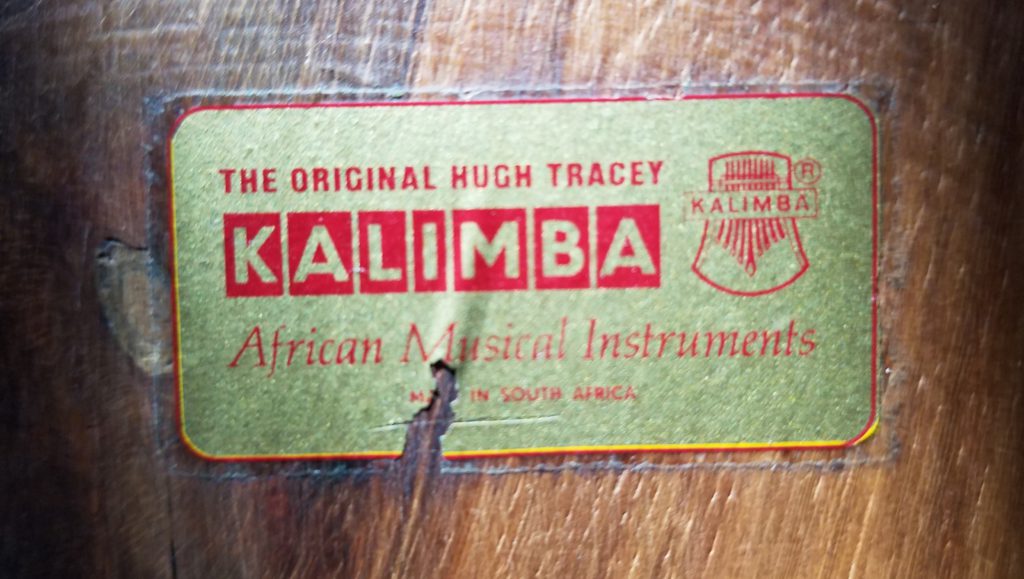
What this meant was that, instead of the hundreds of regional tunings one could find in the sub-Saharan countries, Tracey’s instrument was tuned in a way familiar to almost everyone in the States and across Europe.
This was a smart move, since it made it approachable not only to Western musicians, but to children interested in music as well. In fact, Tracey’s first big import of Kalimbas to America was through a toy company!
Decades have passed since his successful product launch, and today the instrument is no longer considered a toy. Instead, there are serious, high-quality Kalimba makers all over the world now vying for a piece of this once-African pie.
Why? Well, because its sound is so… delicious!
Parts is Parts
The Kalimba is very basic in its design. Needfully so, since most of the time in Africa these are built from nearby trees and whatever scrap metal can be scrounged.
First, there’s a piece of wood. This can be flat, or it can be a number of wood slats put together to form a little box. If a box is made, the last step is to punch a round circle into the box so that the sound can resonate inside and increase the volume of the sound produced.
Next, there are two long strips of metal (the Saddle and the Z-bracket) and a half-round made of wood typically (the Backstop) that, as a collective unit, are called our “bridge” assembly.
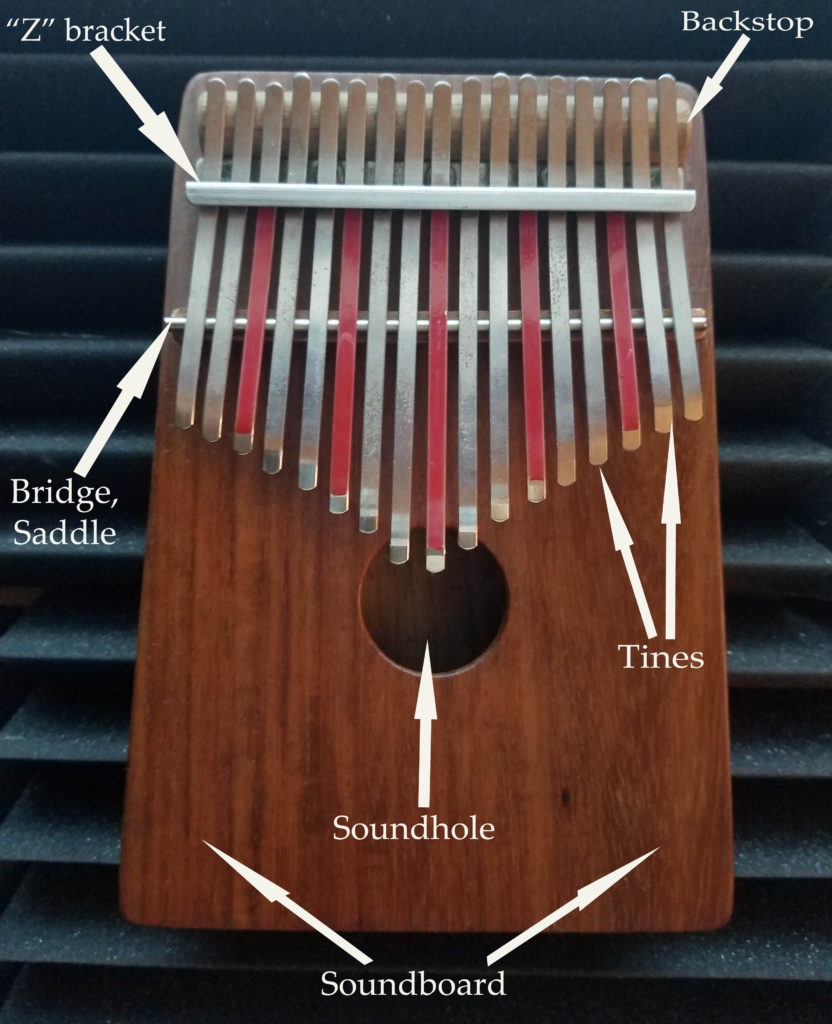
Finally, you take a specific number of “tines” that are different lengths and slide them into the bridge assembly. These will stretch out towards the sound hole and be plucked to make music.
The shorter the tine, the higher the pitch. Thus, with different lengths you get different notes, and can accomplish many diverse melodic compositions with just a pluck of your thumbs!
You can probably see that a Kalimba is a simple construction design. If you can round up the raw materials, you could make one yourself pretty easily.
Or, if you want to make one yourself, but prefer the parts to be all pre-cut and selected for you, there are kits available, like THIS ONE.
The Key to it All
It’s important to realize that the Kalimba is not a fully chromatic instrument. In other words, you won’t get EVERY note available in Western music typically.
Instead, Kalimbas are mostly made to include notes within only ONE musical key, giving you 7 different notes to work with instead of the full 12.
But the notes are not laid out in a way you’d expect: basically, instead of the notes being laid out in a linear fashion, they ping-pong, back and forth, from right to left above the wood and resonance hole.
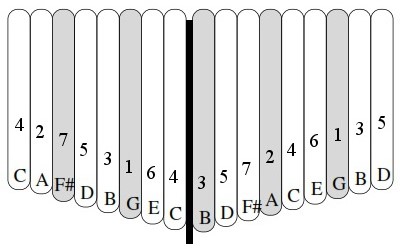
So to play the G major scale in sequence, you alternate between your left and right thumb.
Because of this you can end up playing pretty fast, IF you get used to the layout.
It’s a bit odd and weird at first, but you quickly get used to it if you keep playing.
Thumbin’ It
The Kalimba is supposed to be played with the thumbs. It’s the only instrument I know of that is set up this way.
It might seem a little limiting, since the rest of your fingers are only used to hold the instrument, but once you get the hang of it you’ll find endless ways to express yourself.
If you want to go off the beaten path a bit though, you can lay the Kalimba down and, resting your palms on the wood, play it with most of your fingers. It’s a totally different sound and you’ll have to develop your own playing technique this way, but it is possible.
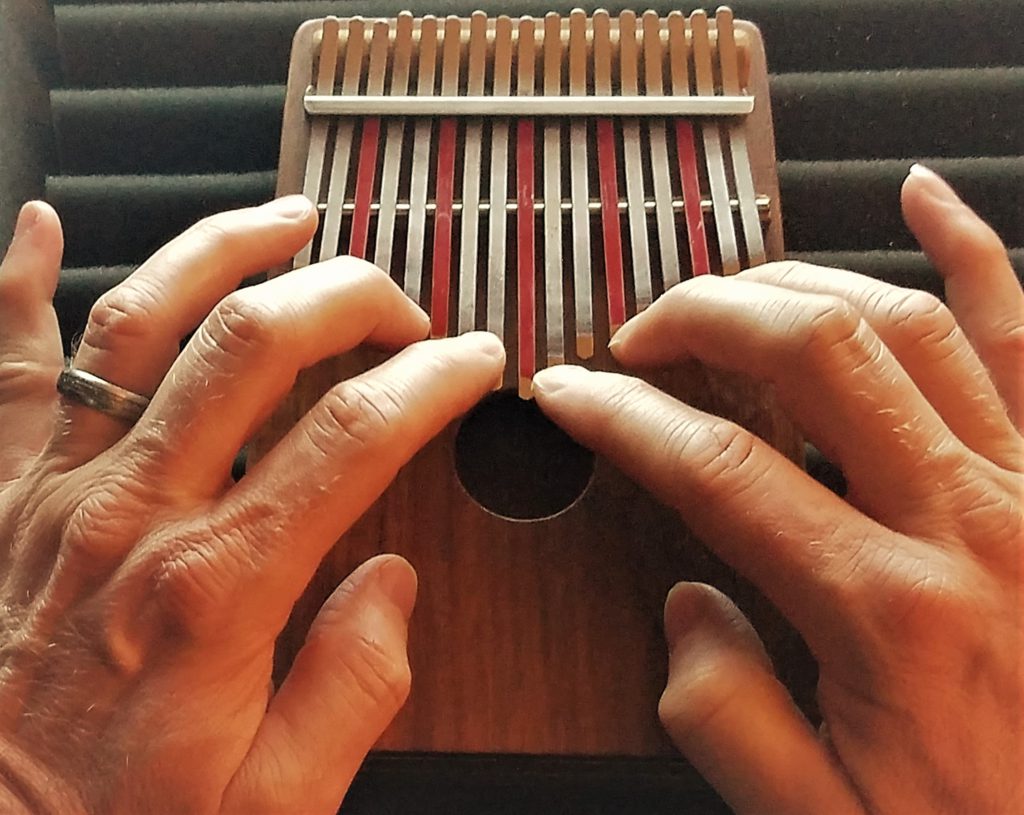
So if chordal playing is more your thing, definitely set that box down and start playing in this UNorthodox manner. Might work better for ya.
Tune That Thing!
Tuning the Kalimba is a fairly easy and straightforward thing, although a subtle hand and patience is needed.
Here’s the simple rule to remember:
* MORE tine = Lower pitch
* LESS tine = Higher pitch
In other words, if you play your Kalimba into a tuner and find a certain tine sharp or flat, you can adjust it back into pitch by pushing it back into, or pulling it out of, the bridge.
Use a free tuning app on your phone to check make sure each tine is on pitch.
If not, you’ll need a small hammer to tap the tine up or down to adjust the pitch. Some Columbus actually come with a tuning hammer. Most do not.
Yes, you can use alternate tunings, but then the playing technique is out the window. You’ll have to figure out your own new playing style, but if you’re up for adventure… GO for it!!
A Man of My Tines
The Kalimba that I’ve used for almost a couple decades now is a “Treble Kalimba” made by the company that started it all, AMI.
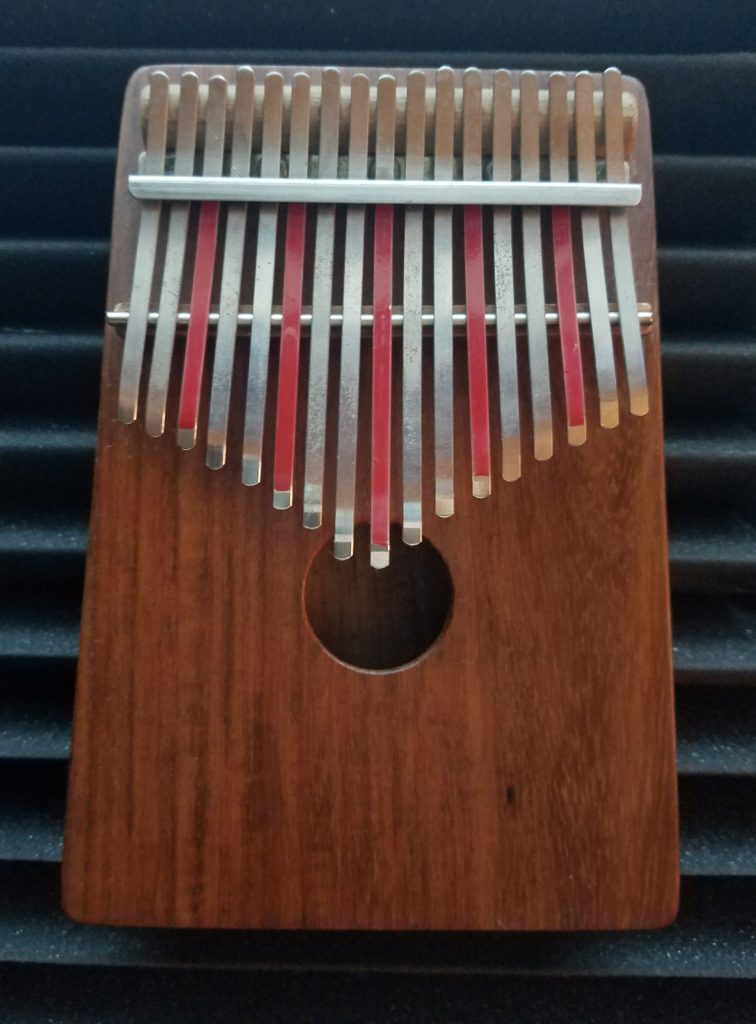
It’s in the key of G, which is the default tuning when you buy a Treble Kalimba.
I’ve used it live and in the studio to great satisfaction.
In fact, on my next album I already have recorded a two-minute little interlude that features this instrument, along with heavily layered vocals and a little synth. It came out great!!
Size ’em Up
Today you can find different sizes, different configurations of wood, and different numbers of tines available on Kalimbas.
THIS WIKI ARTICLE will show you quite a few of the variations.
The common variable among all of them is that tuned, metal tines are held in place by wood. Besides that, the possibilities are endless.
The biggest one I’ve ever seen they call an “Array mbira“. (See picture below.)
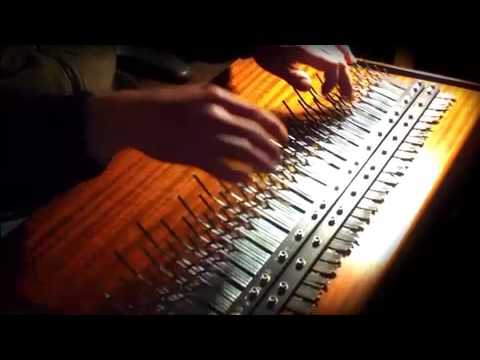
In many ways, it’s just like playing a piano, only instead of keys, you’ve got tines there. Pretty cool.
Whenever I travel down to Florida or the Caribbean, I find a ton of little, dinky Kalimbas. Most of dubious quality. Even at Disney they sell these kinds of things for the kids.
Land on a Brand
No matter what size you want to end up with, buying from a reputable music instrument dealer is the way to go. At the very least, because of the warranty you’ll get.
I suggest getting at least the 17-tine Kalimbas. It gives you faaaaar more flexibility for fitting in a mix, as well as creating melodies appropriately within the context of other instruments.
For example, Guitar Center offers THIS KALIMBA from Stagg, which not only gives you a wide tonal spectrum, with 17 tines, but is also equipped with a 1/4″ jack so you don’t have to mic it. VERY cool if you want to play live.
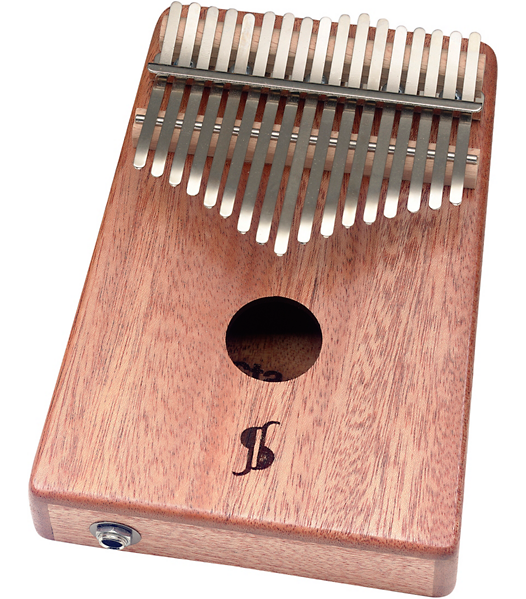
Or, if you want to spend less but snag a great deal, check this out from Amazon: the “Tanke” Kalimba is available in the key of A, B, C, D or E, and each comes in a different color to help you tell them apart.
This is excellent for the multi-faceted Kalimba player. See those OPTIONS HERE.
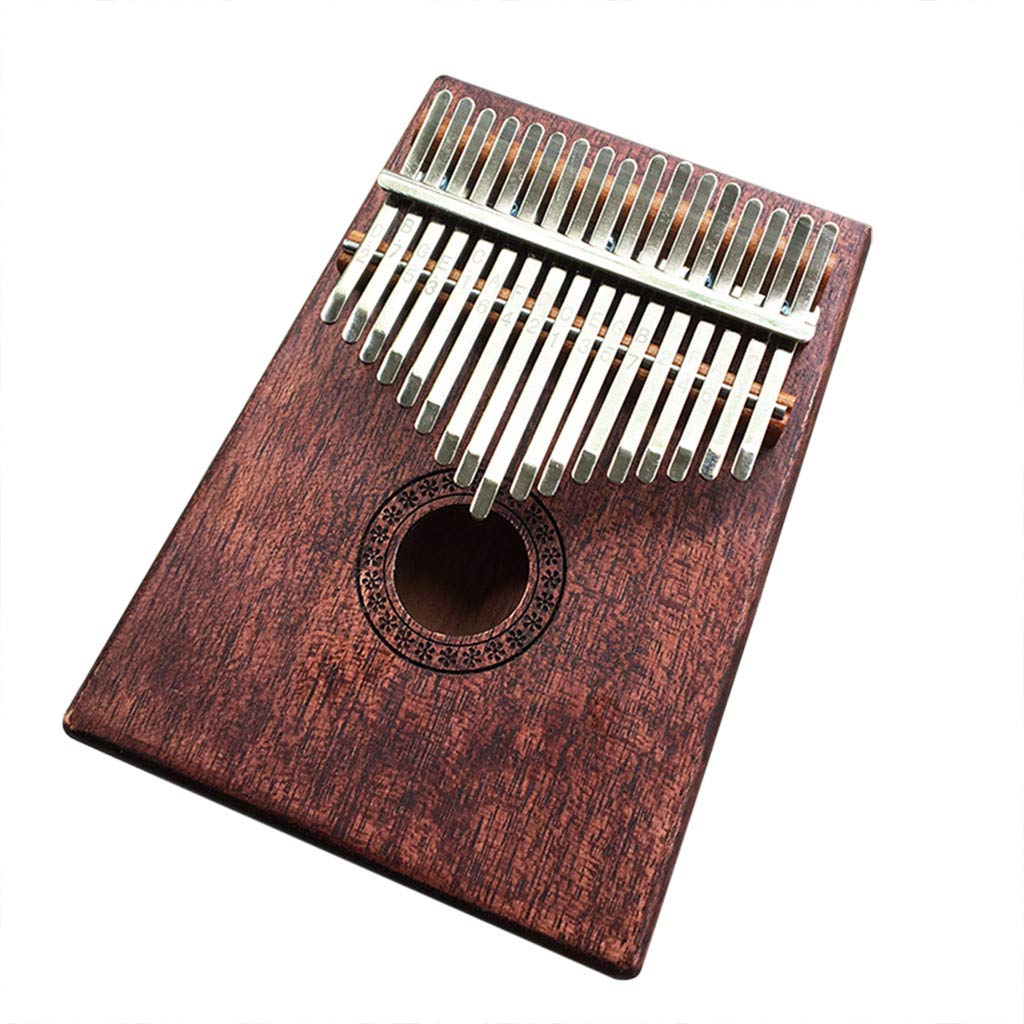
Finally, if you don’t mind a longer shipping time… you can still order from Hugh Tracey’s South African company, AMI – the one that started the Kalimba ball rollin’.
The company is now run by his children since Mr. Tracey passed in 1977. They not only continue selling Kalimbas but they also stock many other African instruments that might, uh, strike a chord with you, so to speak. 😉
Navigate to their website easily by clicking HERE.
Wah Not?!
If you buy a Kalimba in the United States, most of them will come with a feature that is not always present in overseas models: the tremolo holes!
Some people just call them the “back sound holes”, but I think that’s missing the bigger point.
When you engage and disengage the pads of your fingertips on these two small holes, you can create the tremolo effect that I showed you in the video. It’s quite pleasant, and adds to the hypnotic, fantasy-sounding air of the instrument.
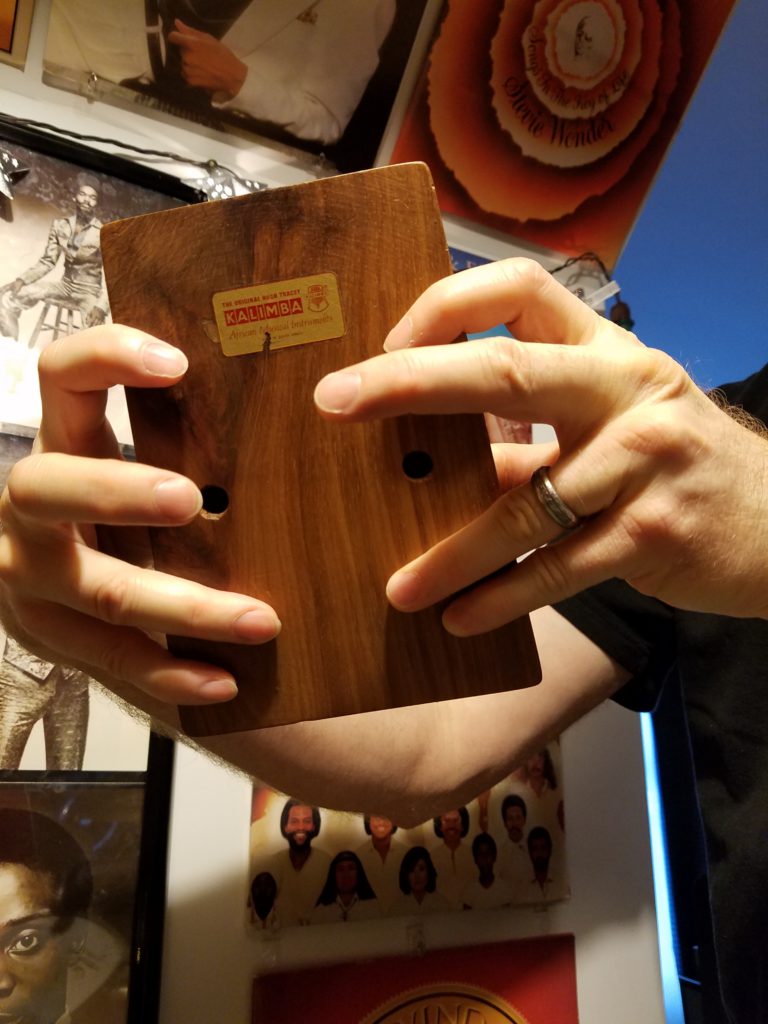
Though you may see it online frequently, it is an error to call this effect “Wah”. A wah effect is one that sweeps through different frequencies.
This is NOT what’s happening in the Kalimba. To prove that, I just tested my own with a strobe tuner, engaging the tremolo effect. It proved that there was NO change in frequency. Therefore,… no “wah”.
What you are hearing is a volume differential. When the fingers are placed over the tremolo holes the volume is louder. When you take them off, the volume is reduced. If you do this fast, it produces a sound wobble that is properly called “tremolo”.
As a side note to that, I saw one other online article call this “vibrato“. That too is a misnomer. Vibrato is defined, the same as wah, as a change in “frequency”, not volume. It’s tremolo, people. Just tremolo.
Regardless of what you call it though, this effect is fun to do, and beautiful to hear. It even works if you plunge your thumbs into the big soundhole in the front!
Oh, and the louder you play, the more pronounced the tremolo will be. Try it – you’ll see what I mean. 😉
A Pluckin’ Master!
I really couldn’t end this post any other way than to let you watch the man most responsible for not only MY interest in the Kalimba, the brotherhood of man, and grooves that make it absolutely impossible to NOT wanna dance…
… but also the one responsible for gettin’ the whole world to shake their booty and be all smiles, perhaps more any other…
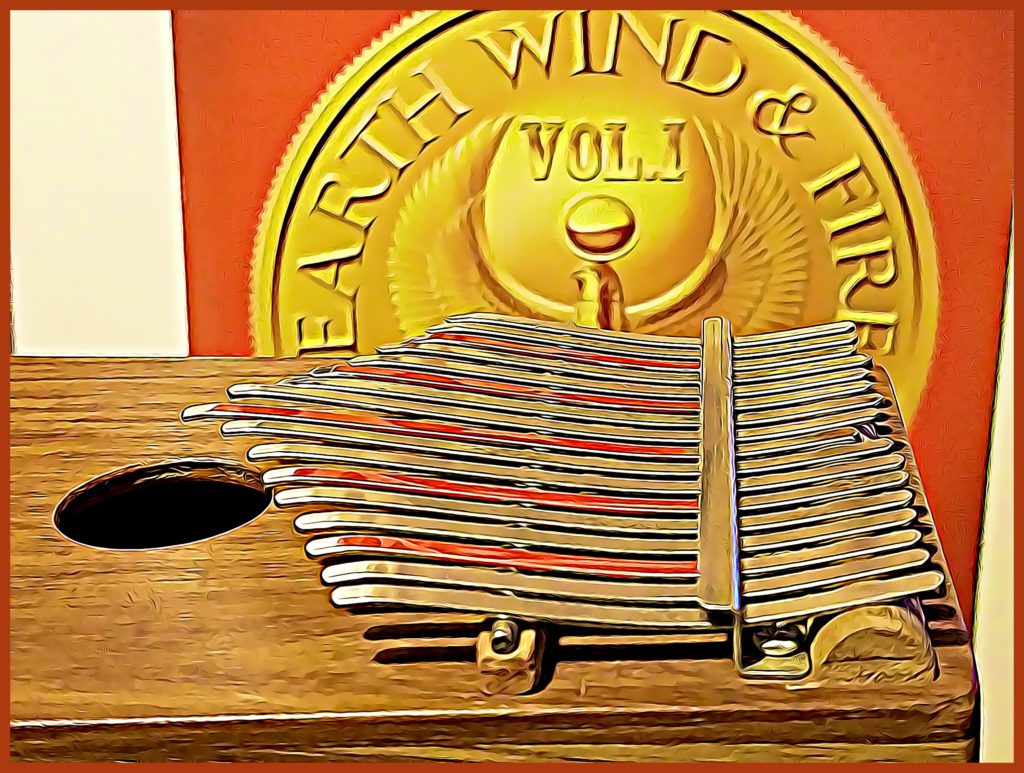
… the trailblazer, the mastermind behind Earth, Wind & Fire, the soul that we truly miss since he left us in 2016, the immortal…
… Maurice White.
We’ll keep these tines a- tappin’ in your honor, Maurice. Rest in peace.
Tappin’ Into a World Beat
So are you as thoroughly stoked to get a Kalimba as I was back in the day??
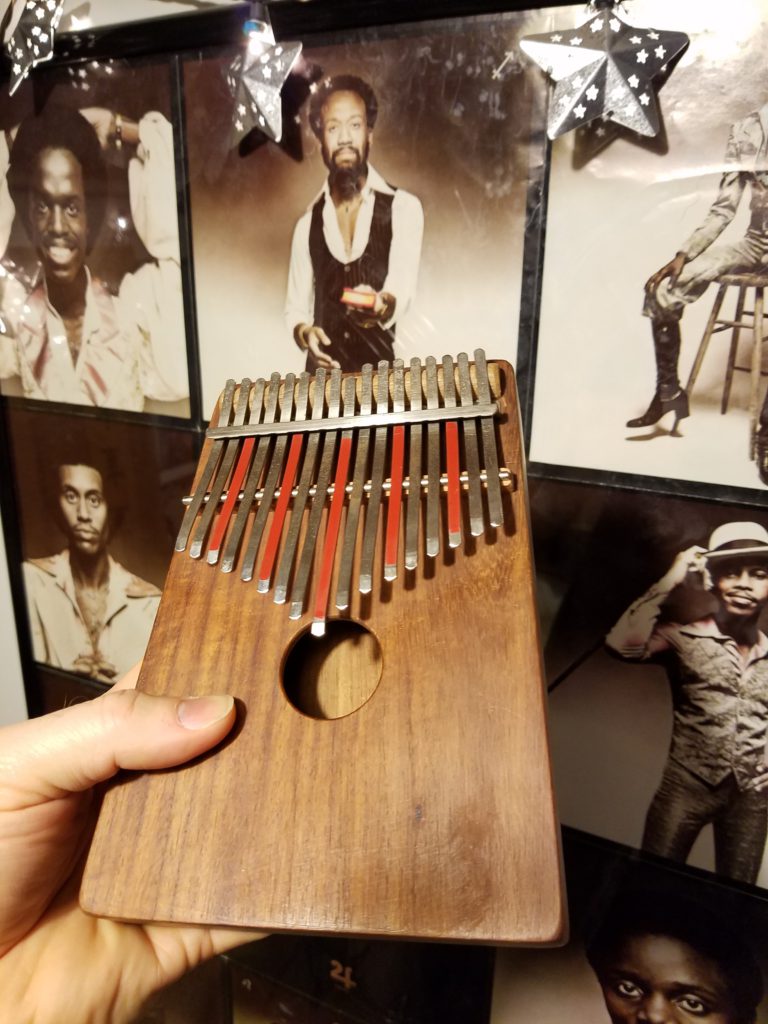
Maybe you already have a Kalimba, and know the magic of striking’ those tines and letting the hypnotic ocean of song wash over you?!
Let us know YOUR own Kalimba story by leaving a comment. Even share a link to your music. It’s a way to ensure that every instrument’s legacy, and men and women who loved them, never disappears.
Now, go… make… sounds!!
Teaj

Glad ya dug it, Polycarp! One day I hope you can hear the two minute track I did just did with vocals and kalimba on my new album. ‘Til then… get thumb-pluckin’ and make some entrancing music!! Lol
Oh, and if you like this African instrument, try puttin’ a little African percussion with it – try THIS UDU DRUM!!
Global music… gotta love the options! 😉
EWF shall ever be one of my most cherished bands. I catch ’em just about every year when they hit Detroit.
Now you have to go GET a Kalimba, Marsha! In their HONOR!! LOL
It’s funny you should mention xylophone, JJ – my two favorite things to mic, that I COULD do on a synth, are Kalimba and Glockenspiel, which is basically a xylophone with STEEL bars instead of wood.
What you DON’T get on a synth is how the frequencies mix in the air, bolster and create new harmonics because of their interaction. That’s where the magic is for me!
As far as difficulty, you’d be able to pick this up in no time if you play any other instruments. As you mentioned, a little time, a bit of practice… and you’re bangin’ on all Kalimbic cylinders!!
I talk about how that time invested is magic in THIS ARTICLE. Check it out!!
Wow wow wow!! I’m blown away! Whaaaaaaat!! Lol. Okay I loved the article .. And the videos are bad.. I watched the concert almost to the end.. Soulful . I gotta lay my hands on this one man. I definitely gotta. Thanks for this article man! I’m thrilled beyond return
I love Earth, Wind & Fire. Like you, I’ve listened to their music over and over. I sure didn’t know what that one instrument was. You wrote a very interesting article and I learned something new. Isn’t that what blogging is all about? Teaching people new things. Thank you for the information.
Hi, I decided to read this article because I am a musician , who also does music production and have only heard about the kalimba as a voice on my keyboard. I have used it in recordings to add in songs I compose for ads. I like the sound of it as well as that of the xylophone. I am glad to learn about it and actually see it from your post. That method of playing, using alternate hands looks a little challenging though, but like all musical instruments, you practice and one day you get it. Thanks for this information.